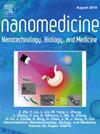基于wga修饰磁SERS纳米标签的横向流动检测方法对甲型流感病毒和肺炎链球菌的通用和高灵敏度检测
IF 4.6
2区 医学
Q2 MEDICINE, RESEARCH & EXPERIMENTAL
Nanomedicine : nanotechnology, biology, and medicine
Pub Date : 2025-08-20
DOI:10.1016/j.nano.2025.102853
引用次数: 0
摘要
感染甲型流感(FluA)病毒通常会导致继发感染肺炎链球菌(s. pneumoniae)。迫切需要开发快速、高灵敏度、同时和通用的流感和肺炎链球菌即时检测技术。我们开发了一种基于小麦芽凝集素(WGA)修饰的磁性SERS纳米标签(Fe3O4@Au-WGA)的双通道表面增强拉曼散射(SERS)-横向流动测定(LFA)技术,用于检测流感病毒和肺炎链球菌。FluA的检出限为14拷贝/mL,肺炎链球菌的检出限为10个细胞/mL,灵敏度约为视觉信号的100倍。用于检测80例流感和肺炎链球菌阳性咽拭子/痰样本和30例阴性样本,诊断准确率为100%,比商用胶体金- lfa试纸条高出19%。因此,该平台在快速、准确、高灵敏度和通用检测流感和肺炎链球菌方面具有很强的临床应用潜力。本文章由计算机程序翻译,如有差异,请以英文原文为准。

Universal and highly sensitive detection of influenza A virus and streptococcus pneumoniae using WGA-modified magnetic SERS nanotags-based lateral flow assay
Infection with influenza A (FluA) virus usually leads to secondary infection with streptococcus pneumoniae (s. pneumoniae). It is urgent to develop rapid, highly sensitive, simultaneous and universal point-of-care testing (POCT) techniques for FluA and s. pneumoniae. We developed a two-channel surface-enhanced Raman scattering (SERS)-lateral flow assay (LFA) technique based on wheat germ agglutinin (WGA)-modified magnetic SERS nanotags (Fe3O4@Au-WGA), for detection of FluA and s. pneumoniae. The detection limits were 14 copies/mL for FluA and 10 cells/mL for s. pneumoniae, and the sensitivity was about 100 times higher than the visual signals. It was used to detect 80 FluA and s. pneumoniae positive throat swabs/sputum samples and 30 negative samples, with a diagnostic accuracy of 100 %, which was 19 % higher than that of commercial colloidal gold-LFA strips. Therefore, the proposed platform has a strong clinical application potential in the rapid, accurate, highly sensitive and universal detection of FluA and s. pneumoniae.
求助全文
通过发布文献求助,成功后即可免费获取论文全文。
去求助
来源期刊
CiteScore
11.10
自引率
0.00%
发文量
133
审稿时长
42 days
期刊介绍:
The mission of Nanomedicine: Nanotechnology, Biology, and Medicine (Nanomedicine: NBM) is to promote the emerging interdisciplinary field of nanomedicine.
Nanomedicine: NBM is an international, peer-reviewed journal presenting novel, significant, and interdisciplinary theoretical and experimental results related to nanoscience and nanotechnology in the life and health sciences. Content includes basic, translational, and clinical research addressing diagnosis, treatment, monitoring, prediction, and prevention of diseases.

 求助内容:
求助内容: 应助结果提醒方式:
应助结果提醒方式:


